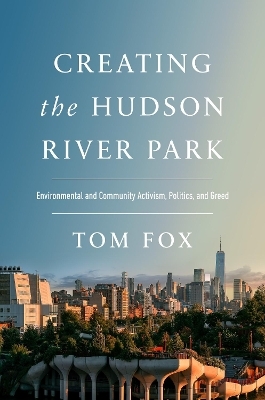
Creating the Hudson River Park
Rutgers University Press (Verlag)
978-1-9788-1401-1 (ISBN)
- Titel z.Zt. nicht lieferbar
- Versandkostenfrei innerhalb Deutschlands
- Auch auf Rechnung
- Verfügbarkeit in der Filiale vor Ort prüfen
- Artikel merken
After the defeat of the $2.4 billion Westway plan to fill 234 acres of the Hudson in 1985, the stage was set for the revitalization of Manhattan’s West Side waterfront. Between 1986 and 1998 the process focused on the basics like designing an appropriate roadway, removing noncompliant municipal and commercial activities from the waterfront, implementing temporary improvements, developing the Park’s first revenue-producing commercial area at Chelsea Piers, completing the public planning and environmental review processes, and negotiating the 1998 Hudson River Park Act that officially created the Park. From 1999 to 2009 planning and construction were funded with public money and focused on creating active and passive recreation opportunities on the Tribeca, Greenwich Village, Chelsea, and Hell’s Kitchen waterfronts.
However, initial recommendations to secure long term financial support for the Park from the increase in adjacent real estate values that resulted from the Park’s creation were ignored. City and state politicians had other priorities and public funding for the Park dwindled. The recent phase of the project, from 2010 to 2021, focused on “development” both in and adjacent to the Park. Changes in leadership, and new challenges provide an opportunity to return to a transparent public planning process and complete the redevelopment of the waterfront for the remainder of the 21st-century. Fox’s first-person perspective helps to document the history of the Hudson River Park, recognizes those who made it happen and those who made it difficult, and provides lessons that may help private citizens and public servants expand and protect the public parks and natural systems that are so critical to urban well-being.
TOM FOX was an original member of the Green Guerillas and the first president of the Hudson River Park Conservancy. He designed the 40-mile Brooklyn/Queens Greenway and was the founding co-chair of the Brooklyn Bridge Park Coalition. Fox was the co-founder and CEO of New York Water Taxi and has served on nonprofit and corporate boards and public commissions and has received recognition from the government, and environmental, professional and civic organizations.
Preface
Introduction
1 Starting the Journey
2 Westway (1974–1985)
3 The West Side Task Force (1986–1987)
4 The Letdown (1987–1988)
5 The West Side Waterfront Panel (1988–1990)
6 New Park Proposed (1990–1992)
7 Things Finally Start Happening (1992–1993)
8 Completing the Plan and Change at the Top (1994–1995)
9 A New Approach (1995–1997)
10 Hudson River Park Act (1998–2000)
11 The World Changes (2001–2003)
12 Hope Renewed, Problems Continue (2004–2008)
13 Going from Bad to Worse (2009–2012)
14 The Trust Goes over to the Dark Side (2013–2014)
15 Public Resistance Builds (2015–2016)
16 A Court Battle Ends, and the Governor Delivers (2016–2018)
17 Will the Incoming Tide Return? (2019–2023)
18 Hope Springs Eternal (2024 and Beyond)
Acknowledgments
Glossary
Notes
Index
| Erscheinungsdatum | 23.03.2024 |
|---|---|
| Zusatzinfo | 17 color and 27 B-W images |
| Verlagsort | New Brunswick NJ |
| Sprache | englisch |
| Maße | 156 x 235 mm |
| Gewicht | 517 g |
| Themenwelt | Geisteswissenschaften ► Geschichte ► Regional- / Ländergeschichte |
| Technik ► Architektur | |
| ISBN-10 | 1-9788-1401-1 / 1978814011 |
| ISBN-13 | 978-1-9788-1401-1 / 9781978814011 |
| Zustand | Neuware |
| Haben Sie eine Frage zum Produkt? |
aus dem Bereich


